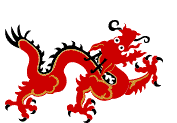During the Vietnam War, the defense of
Air Bases mirrored the conflict itself: There was no rear echelon once
the entire country became a battlefield. Air Bases relatively,
unaffected by ground forces in past wars, were no longer considered safe
havens. They, too, suffered from costly ground assaults and mortar shelling.
The city of Đà Nàng AB is located on the coast of the South China Sea. It is 764 kilometers South of Hanoi and 964 kilometers North of Saigon. Đà Nàng AB borders Thua Thien - Hue Province to the north, Quang Nam Province to the south and southwest, and the Pacific Ocean to the east. Early in the Viet Nam War the city had been the site of a large Vietnamese Air Base. The French had built the base when Vietnam was a colony. Several large concrete bunkers remained from their conflict with the communist. American involvement in the war was expanded when General Westmoreland ordered US Marines to land at Đà Nàng AB. The air and navy base was considered too important. On March 8, 1965 units of the 2nd and 3rd battalions, 9th Marine Expeditionary Brigade landed from a Navy Task force of four ships. The marines came ashore in full battle gear prepared for an immediate battle. Instead, they were greeted by Vietnamese girls greeted them, hanging leis of yellow dahlias and red gladioli around their necks. The Mayor of Đà Nàng AB and the Vietnamese General were on the beach to welcome them. The marines erected a defensive perimeter around the airfield. The first Air Force C-130 transports soon landed, diving sharply to avoid small arms fire. They contained the 1st Battalion 3rd Marine Regiment from Okinawa. The marines could scarcely believe that this was a war-torn nation. Peaceful rice fields, villages, and bamboo groves were located close to the base. The marines soon learned that in Vietnam the war happened after nightfall. During the first night the sounds of grenades, mortars, and gunfire erupted. Air Force personnel arrived, with Security Police assuming responsibility for their share of the base perimeter. Tents were erected and construction was started on the base infrastructure. Within several years the base had all the comfort of home. Including bunkers to offer protection from the rocket and mortar attacks. In 1968 or 69, The Security Police moved out of tents and lived in barracks built by the French. In 1967 or 1968 a second runway was built parallel to the original runway. Đà Nàng Air Base was described as the busiest airport in the world. Transport aircraft and fighters took off and landed around the clock. The base had two bomb dumps located inside the base and two large POL tank farms. Both the Air Force and the Marines had larger bomb dumps located off base. These would be destroyed at least twice during the war. The VC often aimed their rockets at the POL tanks and ammo/bomb dumps. Aircraft from the base supported Marine units in the northern section of South Vietnam. Both the Air Force and Marine Air Wing at Đà Nàng AB flew F-4 Phantom fighters. The Air Force also used C-130 "Hercules" and C-127 "Caribou" transport aircraft to supply the small firebases in the highlands. The base was also home for one of the famous "Spooky" aircraft. Over it's lifetime, four Security Police units were assigned to Đà Nàng AB. Usually when these changes occurred, all personnel remained, just the unit name (or number) was changed. It's a military thing! Đà Nàng AB was the home of the 28th, 35th, 366th, and the 6498th.
Patches Courtesy of Jimmy Gifford, Sentry Dog Handler
Đà Nàng AB Air Base Dogs of Đà Nàng AB Handlers of Đà Nàng AB Attack on Đà Nàng AB Blackie #129X K-9 Posts of Đà Nàng AB Stories by Greg Dunlap Stories by Greg Dunlap #2 Stories of Đà Nàng Trip: China Beach Sick Call The Section Photos # 1 Photos # 2 Photos # 3 Photos # 4 Đà Nàng AB K-9 Reunions |





